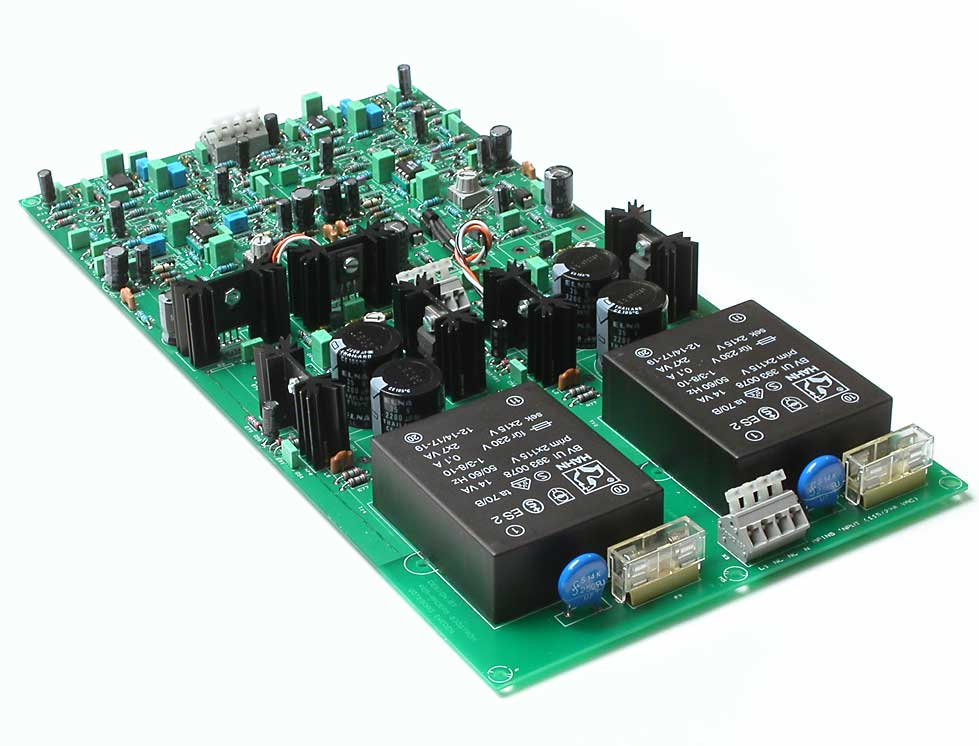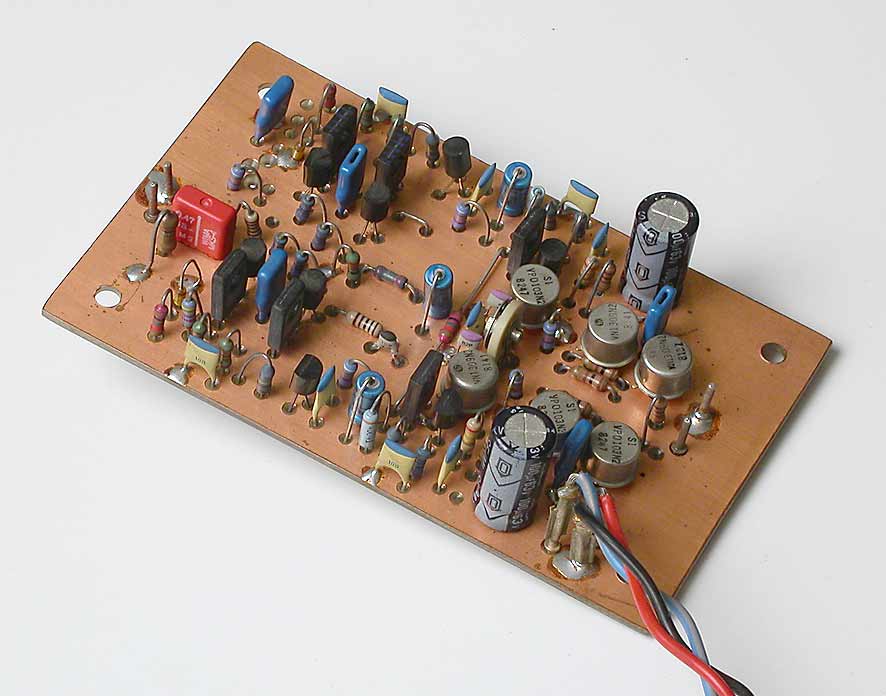QRV-01 - The extreme headphone amplifier
Click on the picture to get a larger view.
I designed this amplifier 1986 and I felt like publishing it now. The excellent MOSFETs from Supertex Inc are hard to get these days (not impossible) so therefore the amp needed to be redesigned a little bit.
The performance is outrageous in headphone amp terms. See the technical data!
Why a discrete design when an opamp is cheaper and more or less equally good?
- The feeling of a discrete design.
- Fun to design and calculate and tailoring the performance.
- Cool to do something crazy.
Click on the picture to get a larger view. This is the very original of this headphone amp.
The original pcb was hand taped but now I have put it into the computer and made a CAD pcb. My design goal was not to make a simple amp but a masterpiece with cheap components and a well tested topology.
The amp works in class A as much it's possible. You can listen at all sound levels in pure class A. Despite the fact that there are many components, the amp is very easy to build. I have removed the influence of variation of the components. The only thing that differs is the noise. Some BC5XX transistors have considerably lower noise than others. Check out transistors from ON (Motorola).
If the noise performance isn't good enough, you can use MAT02/03 or JFET's. The noise can then be lowered with 10-20 dB.
Interesting features
In order to get an extremely linear and extremely low distortion design I have taken a couple of measures:
- Symmetrical design
- No capacitors in the signal paths
- Cascodes in the input stage and in the high gain stage
- Buffered cascodes with emitter followers
- Possibility to use ultra low noise transistors
- Possibility to use SMD transistors in SOT23
- High speed output stage with either small DIL mosfets, TO220 or TO126 parts
- Advanced input bias servo
- Totally DC-coupled together with DC-servos and input bias current servo
- Many decoupling capacitors and EMI-filters
- Professional quality printed circuit board with groundplane
- The pcb has lot's of possibilities when it comes to tweaking. You could use JFET's as input transistors for instance.
- A complete dual mono power supply including transformers


